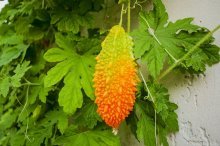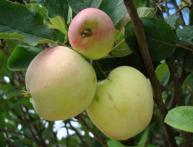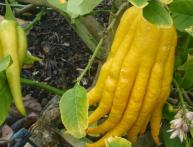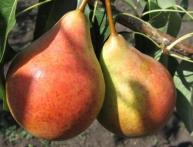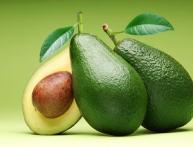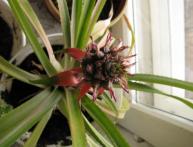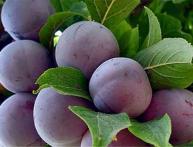Momordica fruit: from seed to harvest
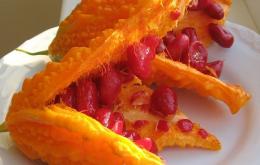
Growing exotic plants is incredibly popular among summer residents. The peculiarities of the Russian climate do not always allow breeding unusual specimens. Momordica feels great on domestic plots. In addition to its original appearance, the plant has healing properties.
Content:
What is momordica
An annual vine from the pumpkin family grows in subtropical and tropical climates. There are about twenty types of culture in total. Under natural conditions it can reach 5 m in length. During flowering, the vine is fragrant with the aroma of gardenia. The flowers themselves are yellow, on long stalks. After pollination, ovaries are formed and the fruits have an unusual shape.
The color of the fruit varies from white to bright orange. The taste of momordica resembles pumpkin. The casing is a little bitter, but this adds piquancy to the dishes. Inside the fruit there is a red pericarp.
It is also edible, but tastes similar to persimmon. In Asian and African countries, momordiki dishes are included in the national cuisine. The fruit goes well with meat, potatoes and cucumbers. To soften the bitter taste of the shell, the fruits are pre-soaked in salt water. Unpretentious liana can be grown on window sills, loggias and garden plots. A short summer is enough for her to ripen.
Germination of seeds
Momordica seeds have a hard shell. This makes it difficult for them to germinate. The seed can sit for several months before the shell breaks down naturally. Scarification is damage to the top layer to speed up germination. There are 2 types:
- thermal: the seeds are alternately dipped in boiling water and then in cold water for a few seconds
- mechanical: the shell is rubbed with sandpaper
After this procedure, the momordica will quickly sprout. At the next stage, the planting material is soaked in a solution of potassium permanganate for several hours for disinfection. Then the seeds are wrapped in a damp cloth, placed in a container and placed near the battery. Germination takes about two weeks. You need to make sure that the napkin is always saturated with moisture. After the sprouts appear, the seeds are ready to be planted in a pot.
If the plant grows in an apartment, then the seed can be germinated at any time of the year. Cultivation of vines for open ground begins in the second half of April. Fertile is poured into the pot priming, consisting of humus, peat and leaf soil. The elongated vine is planted in the garden bed when the apple trees are in bloom.
The momordica fruit is a highly branched vine, so it is necessary to take timely care of the support on which it will climb. A trellis is best. The foliage burns your hands, so you should wear gloves. After flowering, the plant loses its protective properties.
Care and harvesting
Momordica prefers a sunny place, protected from cold winds. According to the rules of agricultural technology, the predecessors of the crop in the beds should be carrots, beets, cabbage or green manure plants.Before planting, organic fertilizers are applied to the garden bed. If the soil is highly acidic, then slaked lime should be added in the fall.
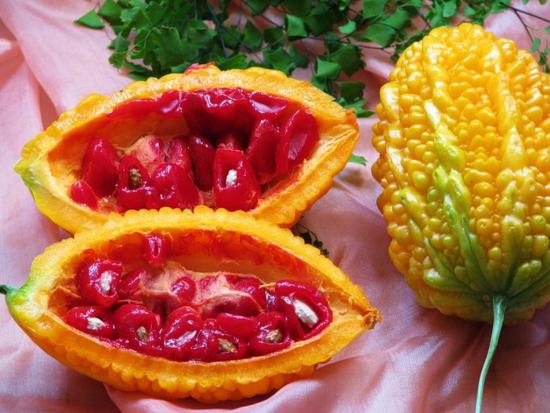
Plants are planted at a distance of 60 cm from each other. During the summer season, it is necessary to regularly weed the beds, apply mineral fertilizers once every two weeks, and water the vines as the soil dries out. Excessive watering can cause rotting of the root system.
The crown should not be allowed to thicken. Leaves shading the fruits should be torn off. All lateral shoots are cut off as soon as they reach 50 cm in length. Momordica It blooms in early July, and the fruits themselves can be collected after 2 weeks. The more often the crop is harvested, the more fruit the vine bears. Fruits are stored for 10 days.
Diseases and pests
Most often, momordica suffers from fungal diseases: powdery mildew, black mold, gray rot and anthracnose. Such ailments affect dense bushes that are rarely weeded. Plants are sprayed with fungicides “Ordan” and “Fitolavin” at the first signs of damage. The vine is resistant to pests, like other members of the pumpkin family. After planting in the ground, the bushes are treated with the preparation “Bud” for the rapid formation of ovaries.
Beneficial features
Fruits are a source of potassium, zinc, selenium, as well as a whole complex of vitamins. Their use has a beneficial effect on the pancreas. Beneficial substances regulate the concentration of sugar in the blood. Besides:
- fresh fruits can clean blood vessels from cholesterol plaques and help the heart;
- A decoction of the leaves relieves headaches and lowers blood pressure. It relieves bronchitis and dry cough
- infusion from crushed seeds is rich in carotene, which is absorbed better than carotene from carrots. Seeds have been proven to increase hemoglobin levels

Pregnant women should not use momordica for medicinal purposes, as it has abortifacient properties.
Momordica in cooking
Slightly unripe fruits are used for food; they are not very bitter. Seeds are most often not prepared. The pulp can be boiled, fried, made into confiture and added to ice cream.
Salad
Soak the fruit in salt water for two hours, then rinse and cut into small pieces. Cut carrots, tomatoes and onions into cubes and place in a salad bowl. Before serving, beet tops, balsamic vinegar and vegetable oil are added to the salad.
Fried momordica
The soaked fruits are cut into thin slices. They are dipped first in egg and then in a breading consisting of flour, salt and paprika. Fried pieces are served with soy-honey sauce.
Fried eggs
After soaking, the fruits are cut into slices and fried in a frying pan. Then eggs are broken into them. As soon as they thicken, the dish is served. An exotic plant will add variety to every garden plot. Momordiki fruits will enrich the table and saturate the body useful substances.
Video about the Momordica fruit:


